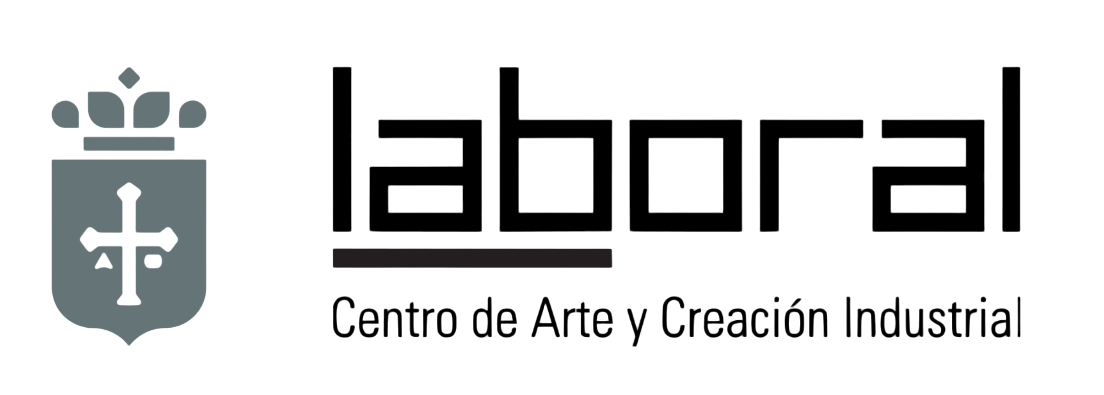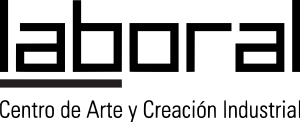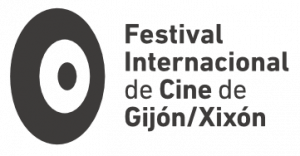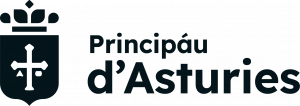FICXLABis a section of the Gijón International Film Festival organized by LABoral. Its objective is to give visibility to the latest artistic practices related to the moving image. In its third edition, FICXLAB insists on the need to provide the viewer with tools that help them unravel the knot of images that shape the complex reality we live.
Aware that films do not show the truth, but rather a plot of figures and sounds that represent it, the program has as its starting point aesthetic and narrative exuberance, but also criticism of dominant power relations, opening up, in turn , to the mix of media, traditions and audiences. On the one hand, despite its supposed anachronism, 16 mm is claimed as a format capable of seeing the aesthetic in everyday life. On the other hand, digital, which captures the drive for reality and immediacy treasured by direct cinema, extending it to unexplored terrain. As a backdrop, the meeting with the public, that is, the need to enhance the feeling of community that arises when watching a film together, participating in a workshop on image and sound or, also, attending a meeting with the artists.
There has never been a true separation between visual artists and filmmakers. A confusion that, throughout the last century, has generated a transversal context in which both traditions mutually enrich each other. FICXLAB advocates giving continuity to this hybridization.
Emily Richardson
Over the last decade, British artist Emily Richardson has produced various cinematographic pieces that highlight the importance of human action in the construction of any environment. His gaze, thanks to a very objective and contained style, which barely knows camera movements, shows us transit spaces, even banal ones, covering a wide range of places ranging from empty streets in East London to forests, oil fields in the North Sea, post-war towers, empty cinemas or Cold War military installations.
16 mm films from the beginning of the last decade are presented, works with little diffusion in which the artist collaborates with different musicians to build an environment marked by visual and sound experience. Along with them, a second program affects the architectural fact through the portrait of a series of spaces with a marked design.
Date:November 21
Time (two sessions):5 p.m. / 10:15 p.m.
Place:Old Institute Culture Center
The two programs are completed with the Beach house installation.
Opening:November 20 at 1 p.m.
Place:Old Institute Culture Center
Paloma Polo
Paloma Polois a Spanish researcher and visual artist based in Amsterdam and Manila. She has participated in exhibitions such as La Biennale di Venezia curated by Massimiliano Gioni in 2013.
Unrestfocuses on the microcosm of life and people of the Casiguran region, in the province of Aurora, to point out a macrocosmic problem of our time: land grabbing through SEZs, military bases, corporations, mining industries, agribusiness, industries of pleasure and entertainment, financial speculation, etc., with the consequent displacement and impoverishment of millions of women and men around the world. A tiny fraction of displaced people are dragged to the shores of Europe, with the sole purpose of subjecting them to abuse and exploitation in the labor markets of the “insured” states.
In addition, a round table will take place in which the topics shown in the film and the work of Paloma Polo will be discussed. The artist herself and the curator Juan de Nieves will participate in this table.
Date:November 21
Hour:7:30 p.m.
Place:Old Institute Culture Center
Lumière Cycle
It is about bringing the main names of experimental cinema to Gijón, fundamental figures to understand its evolution from the 60s to the present.
R. Bruce Elder.His work combines images, music and text to create works that reflect his interest in philosophy, technology, science, spirituality and the human body. Two examples of this are presented in two different sessions.
-Lamentations: A monument to the dead world Part 2: The Sublime Calculatio.
Date:November 22th
Hour:4:30 p.m.
Place:Old Institute Culture Center
-A gathering of crystals
Date:November 24
Hour:7:45 p.m.
Place:Old Institute Culture Center——————————————— ———————————————
Robert Nelson.Suite California is presented, originally conceived as a travel notebook, it covers the wide cultural and geographical diversity of California. A true vision of the subjective experience of his native state through his two works: Suite California & Stops Passes Part 1: Tijuana to Hollywood Via Death Valley and Part 2: San Francisco to Sierra Nevadas & Back Again.
Date:November 22th
Hour:10:15 p.m.
Place:Old Institute Culture Center——————————————— ———————————————
Nathaniel Dorsky.Present at the best experimental film festivals, as well as in important museum exhibitions around the world, he shows us two of his latest works: Prelude and Intimations.
Helga Fanderl. Communing is a selection of 16 mm films curated by the artist herself which includes: Engadin, Chelsea Moments, Tortellini Tortelloni, Yawning Leopard, Versailles, Colonial Garden, The Color Run, Mona Lisa (2013 version), Fountain with a Lion’s Head , Gasometer II, Sledging and In the Snow.
Jonathan Schwartz.It participated in the Rotterdam International Festival and its screenings were shown at the Austrian Film Museum (Vienna). Here he shows us a set of short films that investigate the relationship between the body and the elements: A set of miniatures, Animals moving to the sound of drum, Series Side A, If the war continues, Series Side B, Happy birthday.
Date:November 23
Hour:7:45 p.m.
Place:Old Institute Culture Center
Thom Andersen
Screening of the film The Thoughts That Once We Had (2015), in which Thom Andersen inspires his story in the book Image-Movement by Gilles Deleuze and the classic Hollywood musical comedy.
As Andersen himself says of his work: “The Thoughts That Once We Had certainly tells more than I know. Although I did learn a number of material facts about film and my relationship with it while making it. Few filmmakers are capable of making what Deleuze calls an “affection-image,” an image that shows a face with pure feeling. Finding melody in a glance is also rare. Knowing certain issues that, like reading aloud, is the most cinematic of all actions, or that the more rooted the camera is, the better (as Joris Ivens taught me). My interest in cinema is more carnal than I thought, what interests me about the camera is not what is taken for granted but what is discovered in each shot.
Date:November 24
Hour:10:15 p.m.
Place:Old Institute Culture Center
Gusmão and Paiva
Retrospective of the Portuguese artists João Maria Gusmão and Pedro Paiva where their “philosophical-poetic fictions” will be shown through 26 films projected in 16 mm where we will see a kaleidoscopic, hybrid world, where science, philosophy and religion meet.
João Maria Gusmão and Pedro Paiva have been collaborating since 2001 to make what they call “poetico-philosophical fictions”, which have taken them to museums and art centers around the world, to the Venice Biennale. Most of his works take the form of sculpture, installation and short film with amateur actors and effects that dispense with “high technologies”. His pieces demonstrate a continuous interest in the paranormal, the inexplicable, illusion and complexity in the production of images.
Date:November 25
Hour:10:15 p.m.
Place:Old Institute Culture Center
Jose Val del Omar
Jose Val del Omar(1904-1982), one of the most original and least known filmmakers (or cinemistas as he preferred to be called) in our country. He considered, in a pioneering way, cinema as a total art in which he worked from the most avant-garde experimentation both in the production of works and in the invention of artifacts and equipment.
In parallel to the exhibition being held at LABoral, his “Elemental Triptych of Spain” is presented, in an overflowing manner as he would have wanted, in an unconventional projection, which agrees with his transgressive spirit.
The Triptych,composed by Acariño Galaico (1961/1981–82/1995), Fuego en Castilla (1958-60 completed posthumously and Aguaespejo Granadino (1953–55), it will be screened not in its chronological order, but in the order that the author originally arranged.
Date:November 26
Hour:7:45 p.m.
Place:LABoral Center for Art and Industrial Creation
Partial retrospective of the Zanzibar group
The Zanzibar collective of filmmakers and artists was a pioneer in claiming that the personal, in the first instance, is political. The Zanzibar group was created in France in 1968, although its coordinates do not go through party or union militancy, but rather through hedonism and experimentation typical of the New York underground of the Factory. Among its members we find authors such as Serge Bard, Philippe Garrel, Francis Conrad and Jackie Raynal. His films represent a significant contribution to the cinematographic heritage of May 68, being less ideologically strict than, for example, the work of Jean-Luc Godard. Heirs to Rimbaud’s dandy spirit, from which they got the name Zanzibar, psychedelia, sex, drugs and marginal political positions even within the margins, define this group of young friends articulated around a cinema- home club on rue de l’Échaudé in Paris, and only possible thanks to money and harmony with his patron, Sylvina Boissonnas.
SESSION 1
Serge Bard, Détruisez-Vous
Date:November 26
Hour:17 hours
Place:Old Institute Culture Center
SESSION 2
Frédéric Pardo, Home Movie author of the Lit de la Vierge by Philippe GarrelFrancis Conrad, Heads and Tales
Date:November 26
Hour:10:15 p.m.
Place:Old Institute Culture Center
SESSION 3Jackie Raynal, Deux Fois
Date:November 27
Hour:17 hours
Place:Old Institute Culture Center
SESSION 4
Serge Bard, Fun and Games for Everyone
Date:November 27
Hour:10:15 p.m.
Place:Old Institute Culture Center
Thibault Jehanne
Graduated in 2013 from the Higher School of Art and Media in Caen, Thibault Jehanne (France, 1989) works mainly with film, video, installation and sound art. His concern as an artist revolves around the fugitiveness of images, as demonstrated by his work with devices such as webcams, mobile phones or films without images.
Winner of the FiCXLAB 2014 award with Eclipse, he joins us again in this edition to show us his works D226, Eclipse, Nuit Américaine, Bourbon St and Eskifjörður, at the same time that he works during his residency at LABoral, creating a new audiovisual piece.
Date:November 27
Hour:7:45 p.m.
Place:Old Institute Culture Center
Other Activities of FICXLAB 2015
- Exhibition: Video universe. HAMMOCK Showcase
- Film Series: The yes of every no
- Workshop: A tug of war between the eye and the ear
Meeting with Alex Reynolds Date: November 25 Time: 7:45 p.m. Place: Old Institute Culture Center





